Ultimate Guide to Bikaner
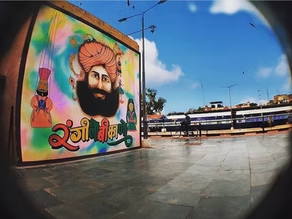
Rangeelo Bikano by @bikanercityblog on Instagram In the northwestern part of the desert state of India, lies the princely and colorful district of Bikaner. Named after its founder Rao Bikaji, Bikaner is known for generating some of the world’s best camels, consequently earning its nickname of ‘camel country’. When you hear the name of this city what is the first thing that comes to your mind? Probably Bikaneri Bhujiya right! But did you know that Bikaner is home to one of the only 2 models of biplane used by British during the World War I, presented by the British to Maharaja Ganga Singh, the ruler of the time? Likewise, many such unique factors as a temple of rats make Bikaner the fourth-largest city of Rajasthan. HISTORY OF BIKANER Portrait of Rao Bikaji by @narendra.bhawan.bikaner The ancestries of Bikaner can be traced back to the Rathore prince, Rao Bikaji, who established the kingdom of Bikaner back in 1488. Bikaji was one of Rao Jodhaji’s five sons, the renowned founder of Jodhpur. According to the Legend, Bikaji left his father’s Durbar in resentment after an unkind remark from his father and wandered far when he came upon the wilderness called Jangladesh where he decided to set up his kingdom and converted it into an extraordinary and stunning city now called Bikaner. HOW TO REACH? Bikaner is placed 330 kilometers northwest of the state capital, Jaipur. Bikaner city is the administrative headquarters of Bikaner District and Bikaner division. By Road:- Bikaner is well fulfilled with roads and buses are easily available. There are direct routes to major cities of India and Rajasthan like Delhi, Jaipur, Agra, Sri Ganganagar, Jodhpur, Alwar, Rewari, Narnaul, Ludhiana, Bhatinda, Ambala, Panipat, Surat, Ahmedabad, Ajmer, Haridwar, Jaisalmer, and many other cities. By Train:- Bikaner railway station is an important railway junction in the North Western Railway zone of Indian Railways. Today Bikaner Railway Station is efficiently well connected to National Capital Delhi and Rajasthan State’s capital Jaipur along with major Indian cities like Jodhpur, Kolkata, Mumbai, Kanpur, Agra, Allahabad, Surat, Ahmedabad, Vadodara, Pathankot, Amritsar, Haridwar, Jammu, Chandigarh, Pune, Bengaluru, Chennai, Hyderabad, Guwahati, Puri, Coimbatore, Thiruvananthapuram, Bhubaneswar, Indore, Jalandhar, etc. By Air:- Bikaner has a Domestic Civil Airport which is located 15 km west of the city. Regular flights to Jaipur and Delhi commenced in 2017-18. BEST TIME TO VISIT Bikaner is situated in Rajasthan a desert state, where the climate is of the extreme type therefore summers are extremely hot and winters are extremely cold. Hence the best time to visit Bikaner is during January and March and October and December. During this time the weather is breezy, pleasant, and a bit chill. THINGS TO LOOK OUT FOR:- Forts and Palaces 1. Junagarh Fort and Prachina Museum Picteresque Junagarh Fort by @narendra.bhawan.bikaner on Instagram Junagarh is a very distinctive fort. Its unique features, like being one of the few major forts in Rajasthan which is not built on a hilltop, make it stand out from all the other forts. Junagarh is also known for being an impenetrable fortress that holds the significance of having never been seized. It was constructed in 1588 AD by Raja Rai Singh, one of Emperor Akbar’s most prominent generals. The fort houses some gorgeous courtyards, balconies, jharokhas, and palaces beautifully designed in red sandstone and marble making it one of the best places to visit in Bikaner. Fun fact: Bollywood movie Manikarnika: The Queen of Jhansi and Nayak were shot at Junagarh Fort. In 1961, Maharaja Karni Singh set up a museum within the fortress that displays royal clothing, essences, accessories of Rajasthani majesty, cutlery, and portraits of the royalty. The ‘Poshaks’ which are the garments worn by Rajput ladies and the family portraits are a constant reminder of the fact that heritage and culture are slowly fading away. The craft of conventional designs, styles, and threadwork on exhibit conveys the fact that Bikaneri culture is so dynamic and vibrant. 2. Laxmi Niwas Palace Laxmi Niwas Palace Laxmi Niwas Palace was the dwelling of the king of Bikaner, Maharaja Ganga Singh. Constructed between 1898 and 1902 by British architect Sir Samuel Swinton Jacob, this building showcases an Indo-Saracenic architectural character. It is now converted into a luxury hotel that is owned by the Royal Family of Bikaner. Fun Fact: The Palace was portrayed as the gorgeous royal residence of Fawad Khan in the Bollywood movie Khoobsurat and was also used for shooting another Bollywood movie Baadshaho. 3. Lalgarh Palace Lalgarh Palace by @narendra.bhawan.bikaner on Instagram The construction of this lavish and imperial palace was initiated by Maharaja Ganga Singh in 1902 in remembrance of his late father Maharaja Lal Singh. The palace’s architectural marvel was brought to life by Sir Swinton Jacob, who cultivated this fantasy palace by stirring Rajput, Islamic, and European architecture. Fun Fact: Dum Dum song from the Bollywood movie Band Baja Baraat was shot at this palace. 4. Gajner Palace and Lake Gajner Palace with evening lights Gajner Palace is often nicknamed as an unrivaled gem of the Thar. Maharaja Gaj Singh of Bikaner laid the foundation for Gajner Palace in the year 1784 which was then finished off by the eminent Maharaja Ganga Singh of Bikaner on the banks of the lake. Covering vast lands of 6000 acres this palace has dramatic landscape, picturesque and architectural beauty. The palace is surrounded by forest and thus was meant to satisfy as a hunting and comfortable vacation residence for the royalty and visiting guests. It has now been transformed into a Heritage Hotel. Fun Fact: Bollywood movie Anamika was shot at this Palace. Sunset at the Gajner Lake Temples 1. Karni Mata Temple Entrance of Karni Mata Temple by @deshnoke_darbar_jai_maa_karni on Instagram The Karni Mata Temple at Deshnok is considered the
An offbeat Rajasthani Village near Jaisalmer
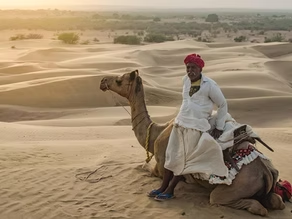
Khuri (locally pronounced as Khuhdhi) is a small village in the Thar Desert. It is located around 48 kilometers from the historical town of Jaisalmer, towards the southwest. It is a small village of laborious people, thriving on minimum subsistence, yet with a smile. It has found its way to satisfaction without hoarding itself in the run of securing urban comfort. The people here have a different philosophy of life. Their primary objective is to enjoy their days of presence on this beautiful planet, their village in particular. The people here have identified their USP in keeping the village off the grid of far-fetched luxurious hotels and comfortable and focusing on minimalistic, cozy, and traditional huts as homestays for their guests. House to serene sunsets, Khuri is the place to go for offbeat travelers. Image credit: Rahul Chakraborty on Unsplash Due to being uniquely away from the main tourist trails, this little village helps you find solace away from crowded cities. The number of activities you get to enjoy here is less. Meals are not as fancy, largely centered towards the Rajasthani traditional cuisine. The means of commuting to and from Jaisalmer are not as many. Yet, this place is sought by many travelers for its ability to captivate the soul. The joyous demeanor of the people is welcoming, they are always friendly with outsiders, enticing that you’re one of them. It should be mentioned explicitly that you won’t feel away from home in this small village. Their compassion and hospitality will level a bond between you and the villagers that will always etch in your memory. For those seeking an offbeat stay within close proximity of the famous Khuri Sand Dunes and a calming fascination in their travel itinerary, this place is a must-go. How to reach Khuri Village? Khuri is a small village falling under the Jaisalmer district of Rajasthan. For coming to the village, you will have to first reach Jaisalmer. From there, you can either board a public bus ( that is the cheaper alternative), suitable for budget travelers, or hire a taxi from Jaisalmer. Air: The nearest airport is Jaisalmer Airport in Jaisalmer. It is at a distance of about 50 kilometers from Khuri Village. You can book a private taxi to your accommodation from the airport costing around INR 500-1000. However, Jaisalmer Airport does not receive regular flights from major Indian cities. Alternatively, you can book a flight to Jodhpur Airport which is about 280 kilometers away from Khuri. You can easily book a taxi from the airport to the village at negotiable prices. Railway: The neighboring city of Jaisalmer has its own railway station which is well connected by trains from popular cities of India like Delhi, Mumbai, Ahmedabad, and Kolkata. The station is at a distance of 48 kilometers from Khuri village and you can either book a private taxi which is going to cost around INR 500 or board a local bus from Gadisar Chowk during the day. Road: This small, and unpopular village can be accessed by road via NH 11. NH 11 connects it with Jaisalmer. You can reach Jaisalmer easily from major cities like Jaipur, Jodhpur, and Ajmer. Further, you can stretch your road trip towards this beautiful village at the south-western border of Jaisalmer. Typically, the distance of 48 kilometers between Khuri and the main city will take less than one hour to complete. What to expect? This Rajasthani village is known all for its unconventional experience. If you’re looking for a stay that is centered on the rural lives of India, this is definitely something meaningful to you. In other words, this is an uncanny village experience, devoid of the glittery resorts and hullabaloo of a big city, and without many things to do. There won’t be any fancy restaurant serving multitudes of cuisines, or places to go shopping. But, the level of joy, and tranquility is what makes this place worth exploring. The long walk through the village streets, interacting with locals, learning about their lifestyles, culture, traditional practices, and challenges, the captivating sunset at the Khuri desert dunes make it more special than most crowded destinations of Rajasthan. Life moves slow in this desert village. Image credit: @manojchoudharyphotography on Instagram What sets the bar higher here in terms of providing perspective is the simplicity and enriched lives that the people here have happily subjected themselves to. You will be amazed that this village has no urban materialistic channel of thought. The houses are simple, the type of food they eat is usually the traditional cuisine. The modern signs of development are hard to find. People are religious, a little superstitious too. They are warm and can spend hours with you in free willing conversations with some valuable life lessons from their limited experiences and knowledge about their lives in this primitive village. What can you explore during your stay at Khuri Village? The village has a lot to offer that will leave you spellbound. The slow and culturally rooted life here is one such attraction. There are innumerable instances that will expose you to the peaceful life that the villagers have adapted themselves to. Their humble smile is a reflection of how deeper things matter in human lives, that we often overlook. The village elderly, women, men, and children welcome you like a family member. Another famous element that can and should find a place in your itinerary is the desert dunes and the moments of dusk and dawn. We all are fans of either watching the sun coming over or bidding adieu to us or both sometimes. The Khuri Desert Dunes are famous for the sunset. You can trek towards the famous spot or take a bumpy camel ride to the sunset spot. Also, the sunrise (if you are a fan) is as serene as the sunset. So, if you are one for waking up early and seeking the pinkish-red east sky, head towards
Corn Village Sainji, Mussoorie: Everything You Need to Know!
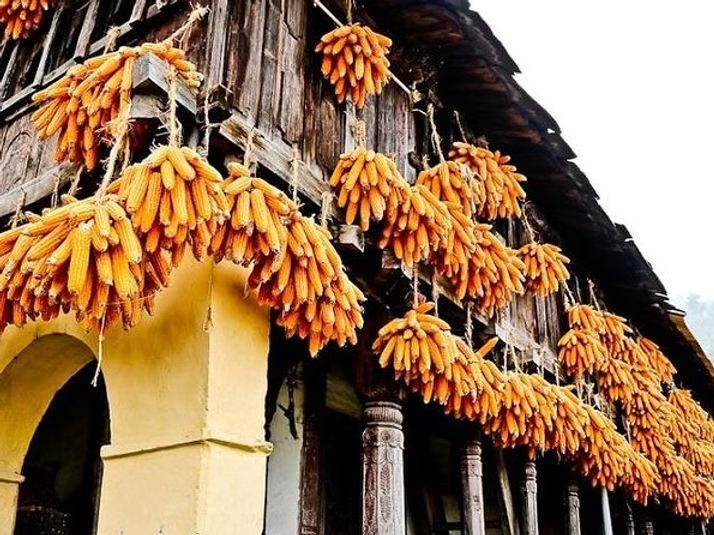
India is a land of vast cultures. Every nook and corner of this country has its own unique sense of culture. Such is the Sainji village, a small offbeat village in Uttarakhand. The very first sight of this village will leave a deep imprint on your mind. When you think about the name of this place, rows and rows of cornfields crop up in your imagination. But that is not how this place gets its name. This village is not just about cornfields, it is so much more. There is an unusual thing about this village that will leave you thinking. The village entrance is marked by a huge gate-like structure, all covered with corn, showing the importance of corn in the village. The village houses and all buildings are covered with corn and it is being used as a piece of art in every house. How to reach the corn village? Best time to visit the Corn village, Sainji Things to Do in Corn Village Things to Keep in Mind while in Corn Village FAQs Corn Village Sainji How to Reach the Corn Village? Sainji Village is just 5 km away from Kempty falls, Mussoorie, in the Tehri Garhwal District. Once you reach the falls you can take a cab, hire a taxi, or avail of public transport like a bus to the Sainji Village. You can reach Mussoorie by road, rail, or air. By Road: Mussoorie is well linked by a network of state and private buses to its nearby cities. Several buses, ply frequently from Delhi, Dehradun, Rishikesh, Tehri, and Haridwar. Buses are easily available from ISBT Kashmiri Gate in Delhi. By Rail: Dehradun Railway Station, situated at a distance of about 28 km, is the nearest railway station to Mussoorie. From outside the railway station, one can hire private taxis or take buses to reach Mussoorie. These taxis are available for sharing as well as on an individual basis. By Air: Jolly Grant Airport (50 km away) in Dehradun is the domestic airport closest to Mussoorie, which is well connected with major Indian cities. All the major carriers offer regular flights to this destination from Delhi, Mumbai, and Bangalore. After reaching the airport, travelers can hire taxis to reach Mussoorie Grazing fields in Sainji Village Best Time to Visit Corn Village Sainji The best time to visit this beautiful village is during September and October as it is the harvest season. You will see more corn and even the inhabitants at work. Every house has one or a bunch of corn hanging upside down in each corner. It looks quirky but innovative. Things to Do in Corn Village There are many amazing things to do in Corn Village Sainji, including visiting the beautiful cornfields, taking a scenic hike through the mountains, and enjoying the stunning views of the valley below. Lets have a look at some of the most popular things to do in Corn Village! 01. Taste the Delicious Food While visiting this village, make it a priority to sample their local dishes. Corn is the major part of their diet with Makke ki roti (corn flour bread) and chutney being their daily meals. It is a simple meal, but it touches your heart. You will find corn in their other side dishes as well, but it is impossible to get over them. 02. Interact with the friendly locals The locals of the Sainji Village are very simple and humble. They are very friendly. You will experience humanity and hospitality in its truest form in today’s world. The shy smiles of the women, mustering up the courage to start a conversation is very amicable. Talking with them and sharing the laughter. They bond with you so well, that you will no longer feel like a stranger in their land. 03. Explore the architecture The houses of Sainji village are very colorful. While most of them are made of concrete, there are a few wooden houses with short doors made of Deodar wood. The short doors are believed to keep evil away. These small cottages are decorated with paintings on the wood and the corn is tied in bunches to dry and stock for the rest of the year. The natural décor instantly warms your heart and makes you smile. The streets are very neat and cobbled. You will not spot any garbage lying around. 04. Take a walk in the Fields You do not want to miss out on long walks in their mesmerizing Corn Fields. The salubrious air, the smell of earth, and flawlessly lined cornfields give an entrancing perspective. It looks almost unreal. One usually stays here for a few hours or a day. But if you are a nature enthusiast and love panoramic views, be prepared to spend quite a few days here. You will enjoy a certain serenity and warmth here even surrounded by chatty locals. The homely atmosphere will warm you to the place immensely. 05. Traverse to the water canal There is a small canal running through this village that provides water. It is too small to be called a river. But it is cleaner as compared to some big rivers. The villagers get the majority of water required for irrigation and for washing clothes and utensils from here. The walkways around the irrigation canal are properly laid. Things to keep in mind while in Corn Village Do not disrespect the community and its beliefs. Interact with the locals to have a better understanding of their culture Take permission before clicking any personal picture or video. Thank them for their hospitality before leaving The locals have kept the village very clean, Do not litter around. Sainji village is ideal for anyone seeking a rural tour of authentic mountain culture and getting to know the rustic lifestyle of the people. It
INDIA’S BEST KEPT MARINE DRIVE

The website of Odisha Tourism’s tagline goes like India’s Best Kept Secret. This cannot be untrue. The state is a hidden gem with most of the mainstream travelers often not finding it on their lists. A particular landscape isn’t famous here like some states known for their gigantic mountain ranges, some are famous for their beaches. A typical experience of Odisha in its entirety should not be tagged with a particular geographical landform. It has different regions, namely North, East, West, and South Odisha, to uniquely cater to your wishlist. Odisha is largely inundated by pilgrimage tourists. The most popular town being Puri, one Hindu holy city forming the Chaar Dham Teerath circuit. Like many, my visits to the states have been to Puri in particular, without exploring much of the other regions. Puri lies in East Odisha, a little over an hour from the state capital, Bhubaneswar. The general itinerary I followed was going about Puri, Bhubaneswar, and Konark (known as the Golden Triangle). These three cities won’t ever disappoint any form of traveler, be it a solo traveler, a geeky one, a family vacation, or explorers. I’ve been to the state so many times, it almost feels like a second home now. The last time I’d been there, it was different. With the blistering cyclone Fani hitting in 2019 April-May, a lot of it has changed. The restructuring by the state tourism has been centrally focusing on making it more organic and real than it ever was. It wishes to attract more visitors by making it hassle-free and facilitating more exposure of the ritual travelers to nature. This short Odisha journey, Bhubaneswar-Puri-Konark, is not apt but it captivates the soul. A particular leg, which I find interesting and surprising is undoubtedly the Puri-Konark Marine Drive. It covers a short distance with well-built roads, windy almost every time, low traffic, and ecstatic natural beauty with the magnanimous sea running alongside. Imagine yourself driving on a smooth highway with the Bay of Bengal’s waves crashing at a close distance! I would pay the world for such an experience. This experience is really like the most scintillating ones in India. Every meter you move, another picturable scene welcomes you. You won’t get a hold of the excitement that comes from the road trip: the thick forest covering the roads, an excellent shade; the sea that never fails surprising its spectators, numerous temples and awesome beaches on the go; surfing stations, resorts; lastly, the Sun Temple in Konark to end (or begin another leg towards Bhubaneswar). The covered Puri- Konark Marine Drive Road; credits: Anindita Das on Unsplash The Marine Drive, what I’d recommend, should be tried with a personal car or a hired taxi or even bikes on rent. The sight-seeing shuttle bus services from Puri will only halt at Chandrabhaga Beach before reaching the Sun Temple in Konark. There’s a lot more exploring and a lot of photos to be taken before reaching Chandrabhaga Beach that only a private taxi or a personal vehicle can enable. During this 45 minutes ride, you can stop at various fascinating hotspots. There’s also a great chance to spot an animal crossing your way. A few hidden gems that are bound to surprise you on this road trip. The journey will, nothing but compel you to wonder (as it happened with me) why didn’t I plan this trip earlier? Balukhand- Konark Wildlife Sanctuary The Balukhand Sanctuary Beach Drone View; Credits: @pure_odisha on Instagram The Balukhand- Konark Wildlife Sanctuary covers the distance between Konark and the holy city of Puri with its thick green patch, sandy beaches, and coastal dunes. This Wildlife Sanctuary extends from Banki Muhan near Puri to Keluni Muhan near Daluakani covering a small area of 87 square kilometers. The flora at the sanctuary includes a cashew plantation, Casuarina trees, and mangroves. There are resorts within the Sanctuary that offer captivating Eco-tourism opportunities for visitors. The area is particularly famous for its rich population of herbivores (deers, blackbucks, and spotted deers), a wide variety of birds. The famous Olive Ridley sea turtles can be seen nesting on the beaches around the sanctuary. As you pass by the sanctuary, there is a high chance of spotting a wild animal crossing your path. The excitement of finding an animal quietly looking for its way makes for riding slow throughout the Marine Drive. The calmness and solitude you experience riding through the woods with sparkling beaches alongside make a memorable experience. You tend to forget every worrisome engagement and just get served by nature in its full bloom. Ramachandi Temple: Sunset at Ramachandi Beach; credits: Sudhansu Sekhar on Maps Goddess Ramachandi, as believed by Hindus of the region, is the presiding deity of this temple. Anecdotes and legends about her protecting the temple from destruction are popular as the Goddess is hailed for her ability to guard the temple. The shrine is highly regarded for its ambient environment and the soothing beach-side winds. The temple is located alongside Marine Drive, a little over 5 kilometers before Chandrabhaga Beach. The small temple has a serene beach in its backdrop. The strong waves can be heard within the temple compounds. Since the temple is located within the Balukhand Wildlife Sanctuary, you can witness deers, monkeys, spotted deers, dogs, jungle cats, hyenas sometimes visiting the shores. The beach is, however, about one more thing. You can also take a shot at adventurous beach and water sports like motorboat rides, jet skies, etc. The activities are cheap and without many people trying them out, you can have a great time finding the blood-pumping and thrill gushing your ride in the quiet waters. In addition to captivating vibes, local vendors selling refreshing coconut water, a plate of Dahi-vada, and pouches of prasadam are found here. This can serve as a good breakfast. Lotus Eco Retreat Wooden huts at Lotus Eco Retreat:
JIM CORBETT NATIONAL PARK – A WALK THROUGH THE WILDERNESS
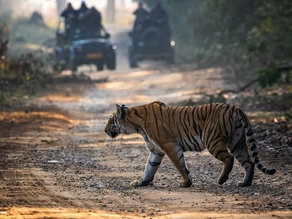
Indian forest land contains numerous delightful and hidden secrets standing by to be uncovered before those who venture deep inside. Corbett National Park is one of these valuable pearls of Indian timberlands that welcomes everybody to encounter the mesmerizing landscapes and the astonishments hidden inside. The transparent greenery, thriving plants, wildlife, and birdlife, and presence of two streams, Kosi and Ramganga make Jim Corbett a jewel of a spot to explore. HOW TO REACH By Road: An extensive system of roads ensures connectivity to major cities like Nainital, Haridwar, Dehradun, and Delhi. Volvo and regular buses offer transfers to Jim Corbett national park from these cities. One can also drive down to Jim Corbett national park on their own vehicle. By Rail: The nearest railway station is Ram Nagar which is well connected with major cities such as Nainital, Delhi, and Bareilly. The distance of Ramnagar railway station to the national park is only 15 km. By Air: The closest airport to Jim Corbett national park is the Pantnagar airport. It is located at a distance of 50 kilometers away from Jim Corbett national park and one can hail a taxi to reach Jim Corbett national park from the airport. BEST TIME TO VISIT The best months to plan your visit to Jim Corbett national park is from December to February. The temperature reaches a pleasant maximum of 20 degrees and a cold minimum of 5 degrees during these months. It is easier to spot animals in the winter season. The Jim Corbett National Park offers a plethora of activities to its visitors. Here are some of the activities you do not want to miss out on. JUNGLE SAFARI The best way to explore any national park is through a safari. Jim Corbett is a prime destination for Jungle Safari. It takes you through the untamed wilderness of the area where you get a chance to witness the remarkable flora and fauna of the area. Corbett Tiger Reserve offers various day visit zones for a memorable experience to view the wildlife and the flora in its unspoiled natural habitat. The 5 major zones are Bijrani, Dhikala, Jhirna, Dhela, and Durga Devi. During the safari, you can spot the famous Bengal tigers, Himalayan black bears, several kinds of deer, elephants, leopard cats, as well as the Indian Python. Jeep Safari To enjoy the best moment during the 3 hours safari, going for a jeep safari is the best option to spot the Bengal tigers. It is a fast and convenient way to enjoy the game drive and discover the wilderness and varied species of flora & fauna. There are only 6 people allow in Jeep safari along with the naturalist guide. The best thing with a jeep safari is that during spotting the tiger you will stop or taking breaks anywhere any time which increases the chances of spotting the wild animals. Timings: Morning – 5:30 a.m. to 9:00 a.m., Evening – 1:30 p.m. to 5:00 p.m. Zones: Bijrani, Sitabani, Durga Devi, Dhela, Sitabani, and Jhirna Cost: Indian – INR 4500/- per jeep, Foreigner – INR 8000/- per jeep. Elephant Safari Elephant safari is the most ideal way to experience the wilderness by an unconventional route. This safari permits you to involve deeper into the wild and get an opportunity to draw near to the untamed life creatures without any dread. Elephant safaris are considered to be some of the most exclusive experiences to be enjoyed around the Jim Corbett National park. There are only 4 people allowed on one elephant. Timings: Morning – 6:30 a.m. to 10:00 a.m., Evening – 1:30 p.m. to 5 p.m. Zones: Reserve forest area Cost: Indian – INR 3200/- per elephant Canter Safari Canter safari is quite popular at Jim Corbett national park. It comprises a vehicle that can accommodate a good number of 18 people at once. It is perfect for a large group of family, friends, or corporate groups. The pathway of this safari is mystic and blessed with a great ambiance that will excite the tourists that take up this safari. Only the Dhikala zone offers the facility of a canter safari. The best part about a canter ride is having a larger group to enjoy the richness of this wonderful location enhances the safari experience. Timings: Morning – 6:00 a.m. to 11:30 a.m., Evening – 12:00 p.m. to 5:30 p.m. Zones: Dhikala Cost: Indian – INR 1500/- per adult, Foreigner – INR 3000/- per adult. How to book a safari The best option to book your safari is the online process. It is always advisable to book your safari in advance through the help of travel agents, hotels, or an Online booking website (www.onlinecorbettsafari.in). RIVER RAFTING AT KOSI River rafting is fun, adventure, and provides a great experience for life. Besides the terrific adventure, it also offers breath-taking scenery of snow-capped mountains, verdant green valleys, etc. Koshi River at Jim Corbett offers river rafting and tubing. There are many experienced scouts and instructors available who are qualified and will ensure that you have a safe experience that is also full of adventure. Best Time to Do: July – September Cost: INR 850 per person CAMPING Another exciting activity to enjoy in Jim Corbett National Park is camping. Camping is conducted in the periphery of Corbett National Park in a village called Syat. The activity is hosted near natural beauty and wildlife while you stay in the safe zone. You can choose your preferred accommodation from tents, bamboo huts, and Machaans. The experience is totally worth it. One feels closer to nature and it is utterly blissful. Best Time to Do: September – March Cost: Variable TREKKING One of the most interesting things to do in Corbett is exploring the place on foot and what better way than trekking! Sitabani is the perfect zone for trekking since it is a densely populated forest area where one might come across elephants,
EXPLORING PONDICHERRY
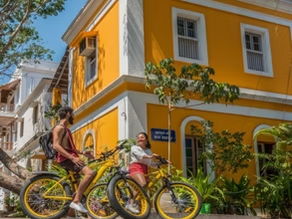
Pondicherry is a union territory and beach-side union territory situated in the boundaries of Tamil Nadu, famous for its fusion of Indian and French culture, this place is bound to give you a colorful and unforgettable travel experience. Until, 1950’s Pondicherry was under French influence comprising of a large French population with French-style architecture, shops, cafes, and churches. Also known as the French capital of India, Pondicherry is definitely going to give you a vacation experience abroad. Every spot at this place with adorned with elegance and fusion of different cultures, architecture, cuisines, beaches, and meditation hubs. The place is also quite famous for its colorful beaches and awesome nightlife with exotic vibes and magnificent history. Here is a list of places you surely do not want to miss out on during your trip to Pondicherry. Colorful Pondicherry with French-style architecture. Paradise Beach- 1) Visit this beach located at Chunnambar, which is going to amuse with its crystal blue waters and golden and white sands. 2) To enjoy the exotic and picturesque view, there are shacks built on the beach for a lounge-like experience and changing rooms for your convenience. Booze and swimming are not allowed at the beach, while the place has arrangements for fishing. 3) You can reach there through Cuddalore Road and it opens at 9 AM. Weekends are very crowded and packed at the beach. Golden sand at Paradise Beach. Sir Aurobindo Ashram- 1) This Ashram was founded by Sir Aurobindo in 1926 and is a popular tourist spot for visitors who seek to achieve peace and tranquility. 2) The Ashram is also famous for its giant library in various subjects like strength training, asanas, swimming, and sports. If you are a fan of spirituality and meditation, this place is perfect for attaining solitude. 3)The place is located at Marine Street and opens at 8 AM. Peaceful Ashram of Sir Aurobindo. Serenity Beach- 1)For a day full of sightseeing, Serenity Beach is a place full of aesthetics and refreshments. 2) Serenity Beach is a perfect place for your family or couple to picnic with soft sunlight and rejuvenating air. This beach is also surrounded by blue waters and golden sand. 3) It is located at Kottakuppam and is open throughout the day. Eye-catching views of Serenity Beach. Arikamedu- 1) Arikamedu is an important archaeological site, said to have been built in the 19th century with the Roman essence of history. 2) Glassware, beads, red and black ceramic statues, lamps, and stones present here will take you back to ancient roman history. 3) Arikamedu is a very underrated spot of historical and archaeological importance for our country. Magnificent archaeological site of Arikamedu. Promenade- 1)This place is a walking arena with rocky terrain and a shore of blue waters. 2) A heaven for photographers and long walks and eating haul, this place is popular for evening walks, sprawling cafes and restaurants around with a refreshing atmosphere of sea breeze and stalls for cotton candies. 3) Walk around the place and you are bound to have a great eating and gala time. Beautiful walking arena of Promenade. Auroville- 1)Auroville is a spiritual Ashram working with an aim of uniting humans of all walks of life irrespective of their status, caste, creed, or religion and to ignite the spirit of unity and harmony. Also known as the ‘City of Dawn’, the place serves as a meditation hub where one can achieve peace with his/her inner self. 2) The architecture of Auroville comprises a golden globe-like structure and many people all over the world come here for spirituality. 3) The place is located in the Viluppuram district. Divine Ashram of Auroville. Auroville Beach- 1)Auroville Beach is one of the most famous beaches of Pondicherry with a wonderful sea view and forest view. 2)Surfing is a common adventure sport here and a perfect escape from busy city life. People also come here for meditation and a tropical view. 3) The beach is open 24/7 for its visitors. Crystal clear waters of Auroville Beach. Chunnambar Boathouse- 1)Chunnambar Boathouse or ‘Plage Paradiso’, is boating plus picnic plus dining experience with sun lounge. Located at the merging point of backwaters of Chunnamber River and the Bay of Bengal, the place will provide you with an unforgettable boating experience comprising of sailboats, rowed boats, pedaled boats, jet skiing, and motorboats amidst the mangrove trees. 2) The boathouse also has many restaurants for continental food and beverages and beach sports to enjoy. 3) The boathouse is located before the national highway and you can reach there by ferry. An unforgetful place of Chunnambar Boathouse. Rock Beach- 1)Rock Beach is one of the most picturesque locations on the earth with worth witnessing landscapes and sunsets. Like other beaches of Pondicherry, Rock Beach also has sparkling blue waters, golden sands, and rocky shores. 2)You can expect crowds on weekends but the beach remains clean and fresh throughout the year also serving street food and delicious snacks. 3) The beach is situated in White Town and is open 24/7. Mesmerizing view of Rock Beach. Old Lighthouse- 1) Serving as a place for the great historical importance of 19th-century architecture, the Old Lighthouse is a magnificent milestone of engineering still navigating ships even after several years of construction. 2) Lighthouse is a perfect place for photography and learning history. 3) It is situated at Goubert Ave, White Town. The magnificent Old Lighthouse of Pondicherry. Immaculate Conception Cathedral- 1) This Cathedral is a perfect representation of Portuguese and Roman architecture like the ones situated in Goa. 2)Also known as ‘Samba Kovil’, Immaculate Cathedral is a very beautiful tourist attraction. 3) It is located at MG Road and opens at 7 AM. Breathtaking architecture of the Cathedral. Pondicherry Cuisines- This portion of the blog is for authentic Pondicherry dishes which you must try on your
Hyderabad From a Local’s Eyes
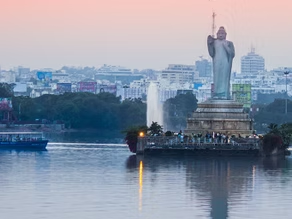
Hyderabad is known for its Mughlai culture embedded with a typical south Indian mindset. This city can be called the Delhi of South, people are more inclined towards winning an argument in a what-so manner ever, everything else fades away at that moment and to be honest food and culture play a huge part in this behavior. The real Hyderabad is not in the Salar Jung Museum or the Golkonda Fort, the heart of Hyderabad doesn’t lie in its heritages, it lies in its food, culture, and atmosphere. The very dialect of a language in a place can tell you about the food they eat and the type of life they lead. Being born in Hyderabad is a privilege and I am a hard-core Hyderabadi. In this blog, you will see Hyderabad from a local’s eyes. And trust me if you ever visit Hyderabad you will not follow any other blog. If you’ve missed any of these spots during your travel to this insane city, you should revisit now. Rio Samosa Point: Samosa is a snack that is close to every Indian’s heart. Well, Rio Onion samosa is the best one you will find in the entire Hyderabad and if you ask me even South India. The point opens at around 4 every day in the evening, the place sells more than 2500 samosas in just 4 hours. The point is located extremely close to the Secunderabad central and the RTC central bus depot. And almost every bus touches Secunderabad central, resulting in a huge number of employees walking down the lane and forgetting about their stressful routines for a few moments before catching their connecting bus. The point is so famous that there was a bus stop named after it a few years ago. How To Reach: Rio Samosa is situated near the clock tower at the Patny center crossroads. You can take a cab or else walk from the Secunderabad central station as it is in very close proximity. Mujtaba Grills: The new USPs of Hyderabad are ‘Shawarma and Mandi’. ‘Mujtaba grills’ are known for its Shawarma. It gives you the best shawarma in the entire city at the most reasonable price of 120 Rs. The Shawarma is not too spicy, not bland yet it hits you hard. The taste of a Shawarma lies in the recipe of the tomato masala, and this place nails it. It gives you one of the juiciest shawarmas in possible with minimum Mayonnaise. The place gained popularity for the Paneer shawarma. I know Paneer Shawarma is to waste of an effort to eat, but this place nails it too. Though Paneer isn’t as good as the Chicken Shawarma, it still hits you right in your gut. I can tell you that this place will provide you with arguably the best ‘Shawarma’ in the entirety of South India. How To Reach: Take a cab to Picket road or else you can take a bus on 218 or 219 routes. Alpha Café: One of the most prominent and most visited Cafés of Hyderabad. Established way back, the Alpha hotel gained popularity throughout the city for the chai it served. For a fact, it still serves the best Irani chai in the city. It opens at 4 in the morning and runs till 11 in the night. The café is located exactly beside Secunderabad central, making it a public hotspot for an evening snack. People rush into the place for a cup of tea, continuously worried whether they are going to miss their connecting bus is the ‘malai’ over your chai. If you ever board a train at the Secunderabad central, do not forget to taste the Alpha special Irani chai. It is a symbol of hope that not everything is going south, somethings will stay intact. How To Reach: Situated exactly beside the Central Railway station. All you should do is cross the road. Ram Ki Bandi: What started as a regular tiffin spot in the residential neighborhood of Afzal Gunj has now transformed into the early morning hangout spot of the city. Ram ki Bandi was the first place to experiment with South Indian food in the city. The Dosa along Coconut-Pudina chutney of the place is the perfect way to start your day. The restaurant opens as early as 4 Am and closes at around 9 Am. On average it sells 54 dosas in every 5 minutes. Ram Ki Bandi is one of the few things in Hyderabad worth waking at 3 in the morning. Crowds start gathering as early as 3:30 in the morning including the winter and the rainy seasons. Though a lot of places have duplicated this idea of opening early with similar menus, Ram Ki Bandi remains always ahead in the race. How To Reach: Book a cab in advance if your going in the earliest of the morning. The location is Begum Bazar, Ram Ki Bandi. You can go after sunrise as well but it won’t be fun. Charminar: If you’ve visited Charminar during the day, and you’re still in Hyderabad go back at night. The nightlife culture was first introduced at Charminar. Charminar enlightens the entire neighborhood during the night. The old city of Hyderabad is always alive throughout the day, but its heartbeat can be heard at night. The beauty of the monument comes out at night. The local food stalls remain open all night, as the inflow of customers keeps increasing by the hour. Though, Hyderabad is famous for its chicken Biryani it’s actually the Mutton Biryani at Charminar that steals the show. The local stalls provide you with crisp and juicy mutton pieces in the biryani. Cooked at low flame for over an hour, the biryani could easily win you the title of MasterChef. How To Reach: If you are visiting during the night, book a cab. That’s the only way, if you want to enjoy
Assam- A Hidden Paradise of Culture
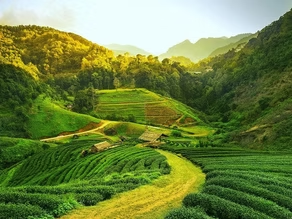
North-East India also said to be the paradise of our country is home to a variety of distinct cultures and folk traditions. The region is also home to renowned tribal culture with ethnic groups including people from various different religions and backgrounds. Northeast is also renowned for its climate, evergreen flora and fauna, its rivers and tributaries, enchanting folktales, and many places with pollution free and fresh breeze. The rural essence of the northeast is the main reason for it being called an unexplored paradise. In this blog, we will be talking about how Assam as one of the northeastern states, is a perfect example of India’s varied and prestigious folk culture and why you should visit Assam to witness its unique cultural richness. The entire region is a perfect blend of mystic glory, art forms, delicious food, and environment-friendly habitat. This blog will try to give its readers all the reasons why you should explore northeast India because of its high significance of folk traditions and culture. The word ‘Assam’ is derived from the word ‘asama’ meaning ‘pearless’, referring to now an extinct language. Assam is famous for its tea plantations all over the world. Assam is also known as the ‘land of red rivers and blue hills’. People of Assam are known as Axomiyas and the native language of the state is Axomiya or Assamese. Assam City Experience the most scenic landscapes in Assam. Art and art forms- Art Forms- 1) Assam’s art and culture are a combination of different ethnic-culture groups. This art is a fusion of Indo Burmese, Mongolian and Aryan culture. 2) Assam is also rich in folk music largely influenced by its history of the Ahom Dynasty and British rule. Classic music of Assam is divided into Ojapali and Borgeet which is a combination of narrative performance. Sattriya and Devdasi, the popular folk dances of Assam, derive their significance from the time of Mahabharata and Ramayana. 3) During the time of Bihu, folk dances are performed by both boys and girls, also accompanied by gagana, dholak, and flute. You can witness classic Bihu performances at Kamakhya Temple and at the garden houses of Albert Hall Museum. 4) Sattriya Nritya is the form of classical Assamese dance that is said to be prevalent since the 15th century. Sattriya Nritya is performed to depict various mythological tales. Tourists here also enjoy dances like Bagurumba which are performed in colorful clothes and beautiful hand formations. This tribal dance is also called the “butterfly effect” as hand movements in the dance resemble the movement of butterflies and birds. If you plan on visiting Assam, several streets and classic theatre performances are bound to impress you. Sattriya Nritya performances also take place at ‘Ankiya Naator Bhaona’. Art- The state is also famous for its jewelry making and use of ruby and mina, terracotta work, cotton and silk spinning, and weaving. Woodcraft and instrument making are also quite famous factors about the state. A trip to Assam will bring you back with authentic silk, cotton, and handloom collection. Various paintings and manuscripts are also said to have originated from the place. Witness various theatre and street performances in Assam. Classic art miniatures of Assam Myths and Religion- Hinduism, Islam, and Buddhism are the religions mostly practiced in Assam. One of the oldest temples of Indian history known as Kamakhya Temple is situated in Assam. It serves as a religious pilgrimage to lakhs of tourists every year. If you are a fan of history and storytelling, tales of Kamakhya Temple are surely going to amuse you, one of the most famous tales being Lord Shiva’s tandava and dropping of ornaments by Parwati. Assam has a rich history of Buddhism since the time of King Kumara as well. During your visit to Assam, 12 historic temples are definitely going to amuse you. Visits to Asvakranta Temple, Sukreswar Temple, Bageswari Temple, and Devi Temple are surely recommended for your visit. Kamakhya Temple is one of the most popular religious sites in Assam. Food- Rice, fish, and chicken are widely eaten in Assam. The Assamese version of fish curry called Machor Tenga is highly recommended. Baked fish with mustard served on leaf called Patot Diya is also a popular dish here. On your visit to Assam, Khar, the traditional appetizer is highly recommended for medicinal purposes related to stomach problems. Even, Gordan Ramsay came to India to try recipes of local food like Machor Tenga and fishcakes. He also learned the use of fresh spices like chilies and garlic. Spices in Assamese food are used directly in food in its fresh form instead of drying them up and then using them. For trying authentic food in Assam, you must visit Terra Mayaa Restaurant, Reboti Chat House, King Chilly, and Missing Kitchen. Assamese Thali is a surely recommended authentic dish for your visit. Lifestyle- 1) As Assam is famous for its handloom and handicraft industry, dresses made of handlooms called Mekhela Chador are worn by women. Assamese men wear dhoti-Ghamosa. During your tourist stay, dressing up in Assamese attire is highly recommended. If you are a culture enthusiast, visit during the traditional festival of Bihu. 2) Rongali Bihu is celebrated in the month of April to celebrate the onset of the sowing season. Then comes the Kangaali Bihu, celebrated in the month of October to celebrate the harvest season. In January, Magh Bihu is celebrated to celebrate the feasting season with bonfires. Assam caters to a large number of tourists during Bihu. Although, Bihu is a non-religious festival, folk music and dance performed by people are worth witnessing. 3) The state witnesses a huge portrayal of culture giving you a huge reason to be an audience. A great majority of Assam lives in rural areas whereas Guwahati and Dispur have undergone vast industrialization and urbanization. The state comprises a number of rivers, forests, and hilly terrain. Agriculture is widely practiced here, most of
Bhopal: The City of Lakes – Everything You Need to Know
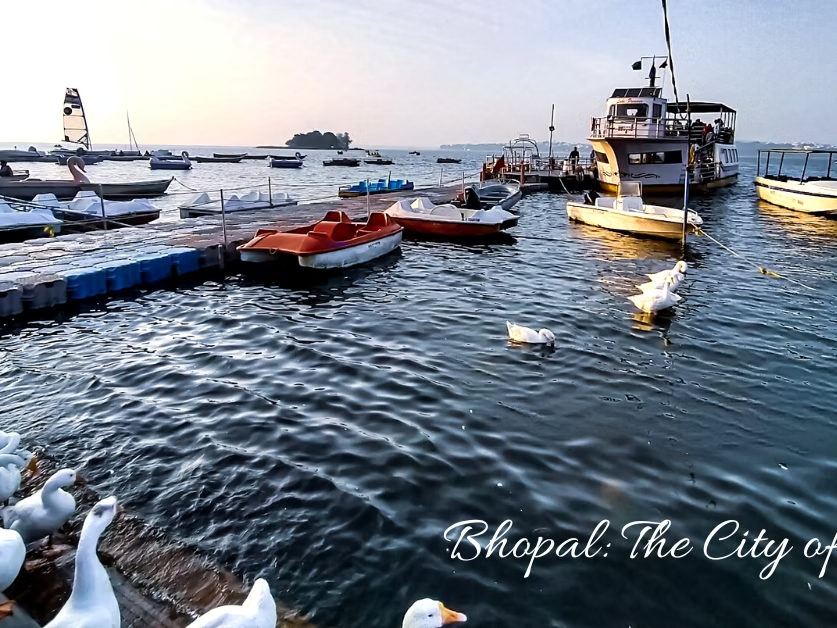
Bhopal, the city of lakes!! One of the underrated gems of the country, Bhopal may not be a place that comes to mind first when thinking of travel; but the solace and serenity you will find here amidst delightfully beautiful backdrops will undoubtedly charm you and make it a special trip for years to come. Bhopal City, popularly known as the “City of Lakes” is the capital of Madhya Pradesh, which is situated at the heart (central part) of India. The ‘Nawabi’ city abounds in a variety of beautiful and interesting places ranging from national parks to zip-lining spots and has recently also captured the attention of several filmmakers, with many popular Hindi shows and movies being shot here. The city is divided into two areas, ‘Old Bhopal‘ and ‘New Bhopal‘ with the New Bhopal City being a hotspot for many tourists. So, let’s take a tour of one of the greenest cities in India, Bhopal. How to Reach Bhopal? By Air By Rail By Road Places to visit in Bhopal Van Vihar Kerwa Dam Jehan Numa Palace Madhya Pradesh Tribal Museum Taj-ul-Masjid Birla Mandir FAQs Final Words Bhopal: The City of Lakes How to reach Bhopal? By Air: Bhopal has direct connectivity with the major cities in India including Delhi, Mumbai, Pune, Raipur, and Hyderabad, with several flights available around the year. From the eastern and southern parts of India, you can get connecting flights via these cities to Bhopal. By Rail: The ‘Old Bhopal’ and ‘Bhopal Habibganj’ stations are regarded as World-Class Stations with well-maintained amenities, and have connectivity with most cities in India. Trains like the ‘Shatabdi Express’ and ‘Bhopal Express’ have a wide reach and are very convenient and reliable modes of transportation. By Road: Bhopal is linked to several cities via road. The roads are well maintained with multiple rest stops along the way. There are many highways like MP SH 18 which connects Bhopal to Ahmedabad, there is NH46 which connects Gwalior, Bhopal, Guna, and terminates in Betul. Bhopal is connected to many 2 and 3 tiers cities through state bus services, like Indore(190km), Ujjain(189km), and Nagpur(354km). You can easily take a bus from Bhopal to Indore, Shirdi, and various other cities. Now that we have talked about how to get there, let’s look at the activities you can indulge in when visiting the regal city of Bhopal! Plan a Bhopal Experience Places to Visit in Bhopal Bhopal is one of the most popular tourist destinations in India. The city is home to a number of historical and religious sites, as well as a number of natural attractions. Here are some of the best places to visit in Bhopal: 1. Van Vihar A profound National park and Zoo in central India and is definitely a place to ‘vihar’ that is, to visit. Van Vihan National Park consists of various spots like the rescue center, zoological gardens, conservation breeding centers, and of course, the national park. The zoo houses a diverse variety of fauna ranging from the tiger, hyena, sloth bear, and leopard, as well as the fear-inducing reptilian display including pythons and many more scaled creatures. A park is set right next to the famous Upper Lake, also known as the ‘Bada Talab‘ of Bhopal. You can also engage in various events like bird-watching camps, photography competitions for various categories, and wildlife week celebrations. The wildlife celebrations begin on 1st October to spread awareness around the conservation of wildlife. Van Vihar is a beautiful spot with lush green trees, swampland and even boasts of a cycling track. Tourists and locals alike often rent bicycles to enjoy a tranquil ride amidst the forests and alongside the beautiful lake shimmering in the light of the rising sun while the whole city sleeps. Van Vihar is open throughout the year and the timings are 6 am to 7 pm from Saturday to Thursday (closed on Fridays). You can take a cab to reach this attraction. Also, you can do Van Vihar online booking now. Van Vihar National Park 2. Kerwa Dam Kerwa Dam is known for its scenic beauty and is a hotspot for tourists who want to try out zip-lining and other adventure sports conducted here. You can see different hues of green in the rich gardens, relish street food at the Kerwa restaurant, and children can have a great time at the swings near the garden. There is also a good spot in the garden for people to view the entire dam backed by the breathtaking sight of rich greenery. You can book your spot for zip lining at a booth near the dam and enjoy a splendid experience. Camping at the Kerwa Dam is another major attraction, the Serenity Camp nearby offers an exciting camping experience including fun ice-breaking sessions and sports like cricket, and water volleyball. There are bonfire nights filled with fun and frolic, and you can also enjoy your own company and indulge in stargazing in the serene night sky lit up like diamonds, away from the hustle-bustle of the city. Kerwa Dam is open on all days from 8 am to 6 pm. The best time to visit is during the rainy season when the dam is gushing with water and its gates are opened. You can either hire a taxi or take a rental car and enjoy a lovely drive along with the fields. Travel Experiences Kerwa Dam 3. Jehan Numa Palace Jehan Numa Palace is one of Bhopal’s finest hotels with a legacy of over 100 years. It beautifully replicates the old ‘Nawabi’ style of Bhopal. Bhopal has inculcated the Mughlai touch in its cuisine and is extremely famous for its Mughlai dishes, the most famous of them being the ‘Bhopali Gosht Korma Mughlai’. Y You can relish this appetizing dish at the Jehan Numa Palace which will definitely
10 Offbeat Things to try in Kolkata
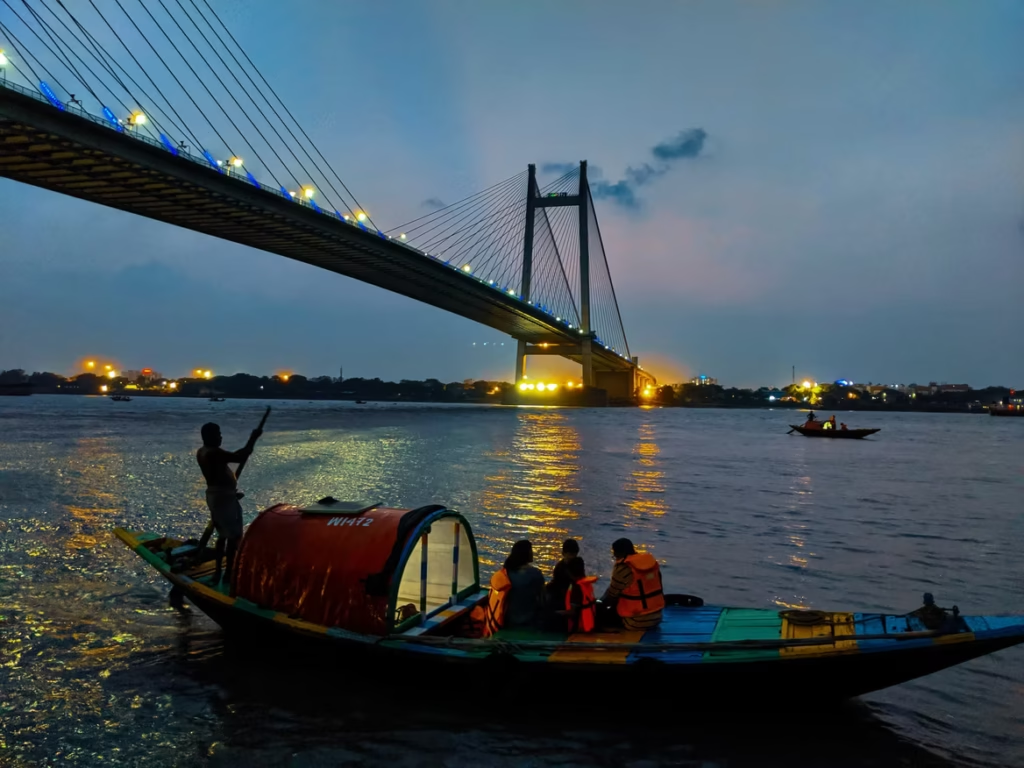
Once the capital city of India, Kolkata brings an overload of emotions to every visitor. The malls and celebrations are the essences of the city of joy. But beyond the popular culture of the Science city and Victoria Memorial, lies the undiscovered rawness of the city. This guide to 10 unique things to try in Kolkata will help you to experience the beauty of the city to its fullest. 1. Take a Boat Ride at Babu Ghat Sunset at Babu Ghat Built during the British Raj, the Babu Ghat gives a magnificent view of the river Ganga. The professional masseurs near the ghat have been providing relaxation to visitors for 200 years. There are numerous wooden boat rides and ferry stations near Babu Ghat. Unlike the popular Princep Ghat, the bonus here is that there is no line for the boat ride. If you’re taking a boat ride, you can ask the rower to take you near the Howrah Bridge. The view of the sunset from here is truly majestic. Ticket price: Rs. 400 – 600 2. Capture the Beauty of Craftsmanship at Kumortuli Idol Designing at Kumortuli Durga Puja is the heartthrob of Kolkata. But even if you visit the city at some other time of the year, you can experience the emotions of Bengal’s biggest festival. The potter’s colony, known as Kumortuli, is the epitome of unrefined art. The craftsmen here cast an enchantment on clay and hay to shape beautiful idols throughout the year. The potters settled around 300 years ago, and to date bless the city with their ancestral profession. An annual art festival called Rang Matir Panchali takes place in April, featuring installations, idol-making displays, paintings, photographs, wall graffiti, and street art. 3. Take a Tram Ride Tram Ride in Kolkata Established in 1873, the Calcutta Tramways Company (CTC) is Asia’s oldest tram network. It’s also the only operating tram network in India. CTC has been an integral part of India’s history for decades. It has also been featured in numerous movies. This cheap and underrated experience can be quite enriching. If you want more to the ride, you can opt for the Kolkata Heritage Tram Tour which starts and ends at the Esplanade Tram Depot. The tour includes local food (snacks), and Kolkata Heritage Tram Tour Momento. It covers various heritage places of historical significance in Kolkata, like Mother Teresa’s House, Shaheed Minar, and South Park Street Cemetery. Riding a tram in Kolkata is truly a surreal experience. It bears a charm that bounds every visitor to shoot. Timings: 6.30 A.M. to 9.30 P.M. Duration: 6 hours 4. Get Spooked at South Park Street Cemetery Tombs at South Park Street Cemetery Over 250 years old, this abandoned cemetery is listed as one of the haunted places in India. It houses over 1900 graves, mostly of children and young adults who died of tropical diseases. It’s the first non-church Christian cemetery and houses the graves of many notable people like the second son of Charles Dickens and William Jones. After a few decades since it was established, the graveyard was closed as it was flooding with dead bodies. According to some, everyone in the Dennison family died within a week of each other from unknown causes. It is said that the tomb bleeds and oozes blood in monsoons, thus getting the nickname of the ‘bleeding tomb’. Though there is no physical evidence of this place being possessed by ghosts, people have fainted and felt dizzy in many instances. Apart from the spook it offers, one can visit this place for its architectural variety. From Roman tombs to pineapple cores, every tomb is designed uniquely. Visitors can take a guide at the entrance for free. Timings: 10 A.M. to 5 P.M. Ticket price: Rs. 20 for Indians and Rs. 50 for foreigners 5. Pay a visit to the Black Hole of Kolkata Monument Plaque at the Black Hole If you’re into dark tourism, you wouldn’t want to miss out on the Black Hole of Kolkata. Fort William, which was originally controlled by the British, was taken over by the Nawab of Bengal. The prisoners of war were locked up in the dark and dingy dungeons of the fort, where many died of exhaustion and suffocation. Later, a memorial was made in the St. John’s Church graveyard to pay respect to the deceased. You can visit the remains of the Old Fort William and take a walk to the new building. 6. Go for a food walk Sweets in Kolkata Bengalis have always been known for their food, thus, local food makes is an integral part of traveling in Kolkata. A proper food walk in Kolkata will satiate all your taste buds from sweet to spicy. Start with a breakfast at the Chinatown of Tiretti Bazar. A cacophony of colors, this place offers a variety of delicious sea foods. After that, head to Park Street to get a taste of the spicy street foods of Kolkata. Do try out the specialties of Bengal- Rasgullas and Misti Doi. If you’re visiting the city in winter, do try out the unique range of sweets called “pithas”. Have biriyani near Indian Museum at just Rs.50. Finally, you can take a yellow taxi ride to the prince ghat and enjoy masala chai while watching a beautiful sunset over the Ganga. 7. Visit the 250-year-old Great Banyan Tree The Great Banyan Tree Located in Acharya Jagadish Chandra Bose Indian Botanic Garden, the Great Banyan Tree has been mentioned in books dating around the 19th century. Though its main trunk had decayed and was removed in 1925, there are several remaining branches canopying around the garden. This miraculous tree still survives and manages to grow. It occupies a huge

